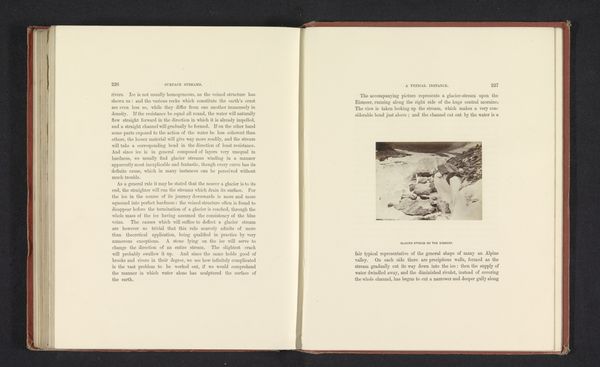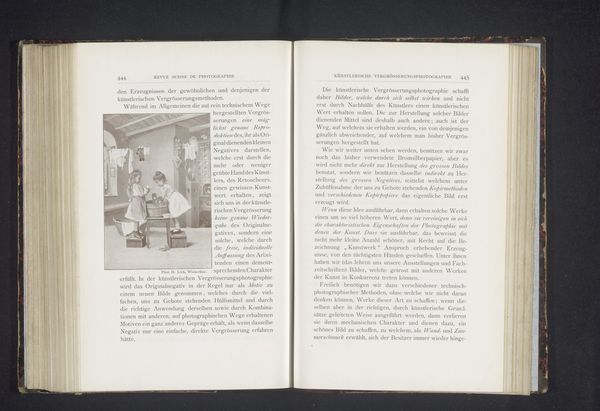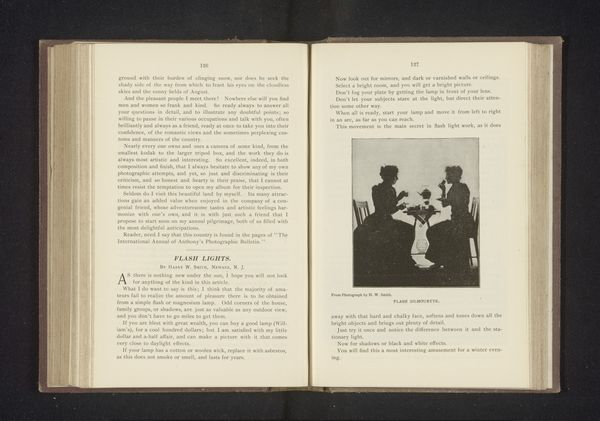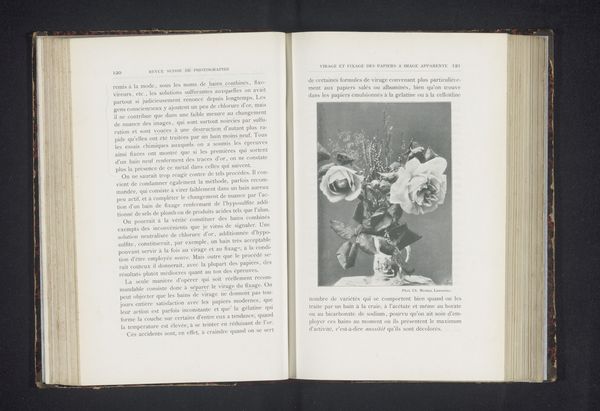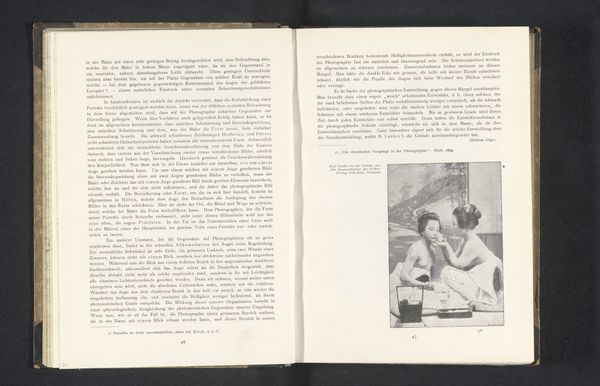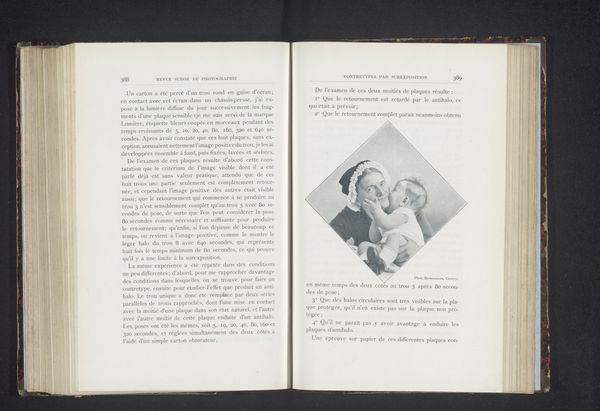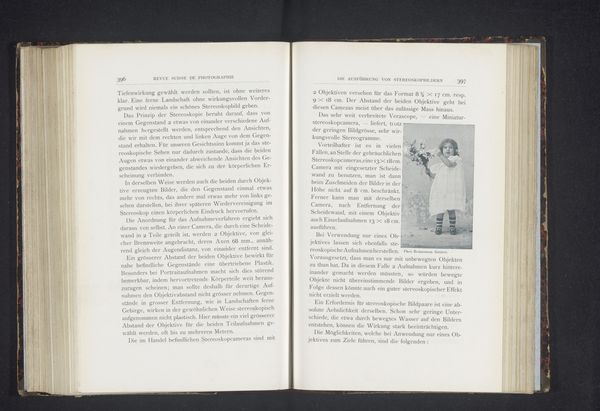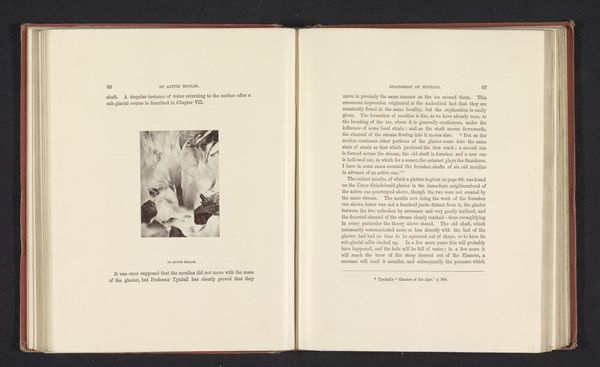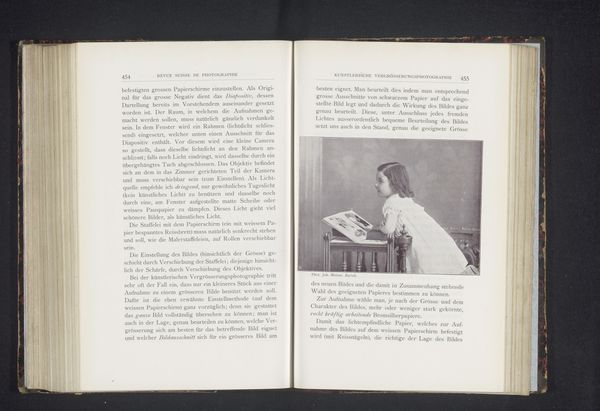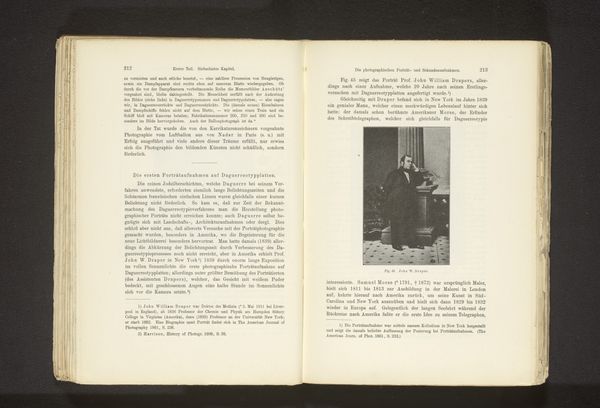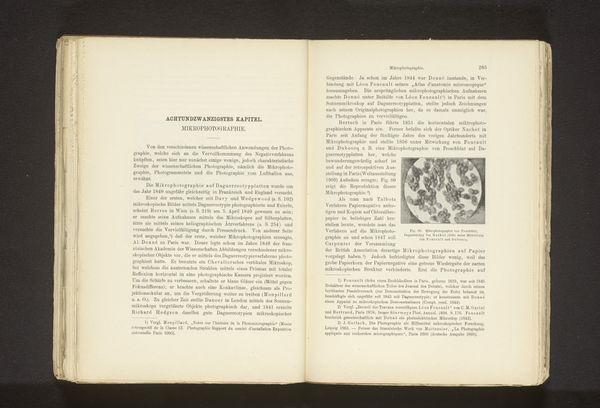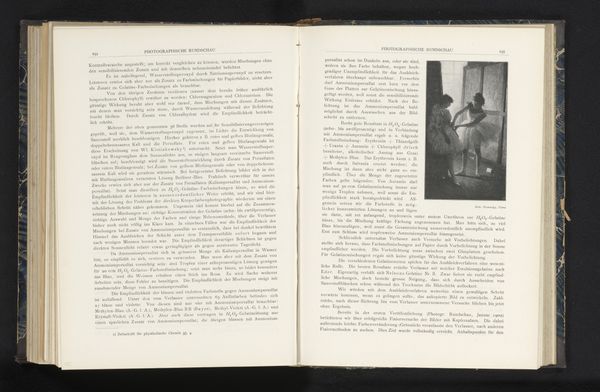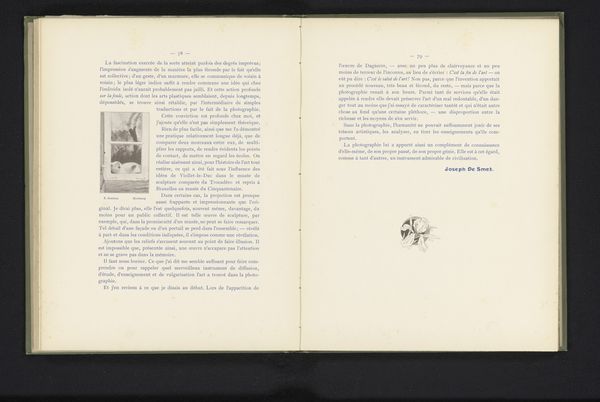
print, textile, photography, albumen-print
#
portrait
# print
#
dog
#
textile
#
photography
#
paper medium
#
albumen-print
#
historical font
Dimensions: height 46 mm, width 89 mm
Copyright: Rijks Museum: Open Domain
Curator: Here, let's consider this interesting print featured within a book, before 1902, titled “Portret van een onbekend kindje met twee honden,” which translates to “Portrait of an Unknown Child with Two Dogs,” attributed to Frédéric Boissonnas. The medium is an albumen print. Editor: Oh, what a striking image. The child, centered between two dogs, gazes out with a calm intensity, surrounded by the texture of the page itself. It’s simple, yet there is a deep resonance of domesticity and vulnerability. Curator: Precisely. The albumen print was popular then for its fine detail and tonal range. This one exemplifies that, though it is also an example for describing "alterations" from chemical procedures related to its processing. The book presents a snapshot of the cultural interest in children, family, and perhaps even early approaches to photographic preservation. Editor: And the dogs! They frame the child so perfectly, almost acting as protectors or companions. Dogs often represent loyalty, guidance, and unconditional love. This arrangement conveys a subtle narrative – a tableau of childhood innocence shielded by these loyal guardians. One wonders about the absence of the parents… what stories of childhood did photographs from this era try to portray? Curator: That's a wonderful interpretation. Photographic portraits like these weren’t just representations of appearance; they played a crucial role in solidifying bourgeois family identity, and disseminating ideals about childhood innocence. Editor: Exactly! The very choice of posing the child with these animals suggests a cultivated image of an idyllic childhood, shaped by values of kinship and security. Even in the way we study them in texts. The page, the image, it all has purpose beyond face-value representation. Curator: I concur. It reflects how carefully constructed images shape our understanding of history and personal memory. Editor: It's a reminder that visual cues can echo across generations, and impact how we understand a particular cultural idea.
Comments
No comments
Be the first to comment and join the conversation on the ultimate creative platform.
